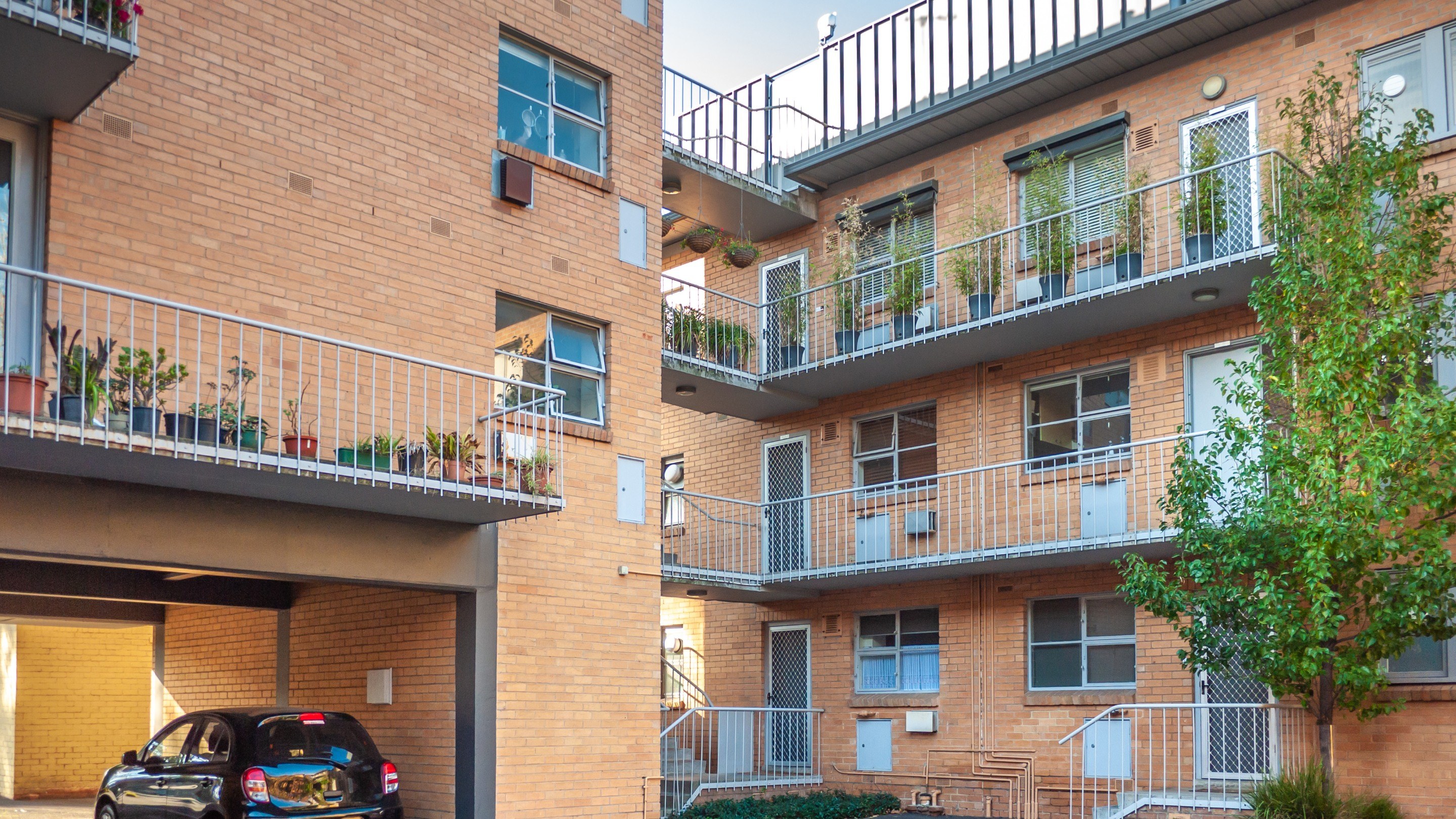The Current Reality:
Owners Corporation insurance premiums across Victoria have risen sharply in recent years, with industry reports indicating typical annual increases ranging from moderate to significant percentages. This upward trend has placed substantial pressure on strata communities, straining budgets and escalating levy demands.
Many Victorian Owners Corporations now face unprecedented insurance challenges. Over recent years, premiums have increased substantially, leaving committees facing difficult decisions: maintain adequate insurance coverage or reduce levies to keep costs manageable.
This guide provides actionable strategies developed from working with Melbourne buildings to reduce premiums, maintain proper coverage, and prepare for continued market volatility.
Navigate This Guide

Understanding the Insurance Crisis
To combat rising costs effectively, you must understand the forces driving premium increases:
Primary Cost Drivers
1. Climate Events
Weather-related insurance claims have fundamentally changed insurer risk models across Australia. Victoria has experienced increased frequency of severe weather events including storms, hail, and flooding in recent years, contributing to billions in insurance claims nationally.
- Severe weather events increasing in frequency
- Flash flooding impacts growing
- Storm and hail damage claims rising
2. Cladding Remediation
Despite ongoing remediation progress through programs like Cladding Safety Victoria, insurers remain cautious about fire risks.
- Hundreds of buildings undergoing remediation
- Limited insurer appetite for affected buildings
- Premium loadings for buildings with cladding concerns
3. Construction Costs
Building and construction costs have experienced significant increases since 2020, with various indices showing growth well above general inflation rates.
- Material costs elevated above pre-pandemic levels
- Labour shortages driving wage growth
- Sum insured values requiring adjustment
4. Market Consolidation
Several insurers have exited or reduced their strata insurance offerings in recent years.
- Fewer insurers actively quoting
- Reduced competition in the market
- Limited coverage options for complex risks
Market Outlook
Insurance markets remain challenging with continued upward pressure on premiums. Small to medium buildings, particularly those with 4-8 floors, typically face increases based on age, maintenance history, and risk profile. Older buildings and those with known issues face the steepest challenges.
Understanding these market dynamics helps committees budget appropriately and implement strategies to minimize impacts. While challenging market conditions continue, proactive management can significantly reduce premium growth.
10 Immediate Cost-Reduction Strategies
These proven tactics can help reduce your next renewal costs:
1. Increase Your Excess Strategically
One of the most effective immediate savings strategies.
Excess Increase Options:
Small increase (e.g., doubling from lower base):
- Typical saving: Up to 10-15% of premium
- Risk level: Low - manageable for most buildings
Moderate increase (moving to mid-range excess):
- Typical saving: 15-25% of premium
- Risk level: Medium - requires planning
Substantial increase (high excess levels):
- Typical saving: 25-35% of premium
- Risk level: High - emergency fund essential
💡 Smart Strategy: Create a dedicated insurance excess fund equal to at least 2x your excess. This allows you to maximize savings while managing risk.
2. Bundle Policies Intelligently
Combine multiple coverages for package discounts:
- Building + Public Liability: Often 5-10% saving
- + Office Bearers Liability: Additional savings possible
- + Machinery Breakdown: Further package benefits
⚠️ Caution: Ensure bundling doesn't compromise coverage quality. Some standalone policies offer superior protection.
3. Time Your Renewal Strategically
Insurance markets can have seasonal variations:
Consider timing around:
✅ Post-storm season periods
✅ Mid-year when insurers may have capacity
❌ Avoiding peak catastrophe seasons
✅ Planning well ahead of renewal dates
4. Implement Risk Reduction Measures
Documented improvements can influence premiums:
Quick Wins (Can implement within 30-60 days):
- ☐ Install water leak detection systems
- ☐ Update emergency procedures and signage
- ☐ Complete electrical safety checks
- ☐ Document maintenance schedules
- ☐ Enhance security measures
5. Review Your Valuation
Ensure your sum insured is accurate:
- Many buildings may be over or under-insured
- Valuations should reflect current replacement costs
- Get independent valuations every 2-3 years
- Include all necessary components (demolition, fees, GST)
Quick Check:
Compare your sum insured per square metre against current construction cost indices for your building type.
6. Negotiate Multi-Year Agreements
Lock in terms before further increases:
- 2-year agreements: May offer discount and rate protection
- 3-year agreements: Potential for better terms
- Include appropriate review clauses
- Maintain payment flexibility
7. Form Buying Groups
Collaborate with neighboring buildings:
- Multiple buildings = increased negotiating power
- Share professional costs
- Benchmark pricing effectively
- Access better terms
8. Optimize Coverage Limits
Review and adjust coverage components:
Coverage Types to Review:
Office Bearers Liability:
- Assess appropriate limits
- Consider actual exposure
- Review based on complexity
Voluntary Workers:
- Consider actual exposure
- Review volunteer activities
- Adjust to match reality
Government Audit Costs:
- Review based on compliance history
- Consider recent audit results
- Adjust appropriately
9. Payment Plan Optimization
How you pay affects costs:
- Annual payment: Often cheaper than monthly
- Direct debit: May attract discounts
- Early payment: Can provide negotiation leverage
💰 Cash Flow Tip: Consider using appropriate financial management to optimize payment timing while maintaining cash flow.
10. Professional Broker Engagement
The right broker can add significant value:
- Access to multiple insurers
- Market expertise and negotiation skills
- Claims advocacy included
- Risk assessment guidance
Broker Selection Criteria:
- ✓ Strata specialization (not general insurance)
- ✓ Proven track record
- ✓ Market access and relationships
- ✓ Claims management experience
- ✓ Fee transparency
Professional Risk Assessment: Your Strategic Tool
Insurers price based on risk perception. Change their perception with data:
Building Risk Assessment Report Components
Essential Elements for Premium Reduction:
1. Maintenance History Documentation
Document your proactive maintenance approach:
- Multi-year maintenance records
- Component replacement schedules
- Response time documentation
- Contractor quality standards
2. Risk Mitigation Measures
Highlight every risk reduction initiative:
- Fire safety upgrades
- Security enhancements
- Water damage prevention
- Structural monitoring programs
3. Claims Management Excellence
Demonstrate responsible claims history:
- Root cause analysis for past claims
- Preventive measures implemented
- Incident management procedures
- Below-excess incident tracking
Risk Assessment ROI
Professional assessments typically cost several thousand dollars but can deliver premium reductions that provide payback within months.
Insurance Negotiation Masterclass
Transform your renewal from passive acceptance to active negotiation:
Pre-Negotiation Preparation
Gather Your Ammunition:
- Competitive quotes: Multiple comparable options
- Claims ratio: Calculate premiums paid vs claims made
- Loyalty factor: Years with current insurer
- Payment history: On-time payment record
- Building improvements: Risk reduction investments
Negotiation Script Templates
Opening Position:
"We've been loyal customers for [X] years with only [Y] claims totaling [Z]% of premiums paid. The proposed increase doesn't reflect our excellent risk profile. We need to discuss a fair renewal that recognizes our track record."
Leverage Competition:
"We have quotes from competitors at [X]% below your renewal. We prefer to stay with you given our history, but need compelling reasons. What can you offer?"
Create Win-Win:
"If you can provide competitive terms with reasonable future increases, we'll commit to a longer-term arrangement. This gives you retention and us stability."
Negotiation Timing Strategy
- 90 days before: Request renewal terms
- 75 days: Obtain competitive quotes
- 60 days: Initial negotiation
- 45 days: Second round discussions
- 30 days: Final decision deadline
- 15 days: Implementation buffer
Alternative Insurance Models
When traditional insurance becomes challenging, consider alternatives:
Model 1: Discretionary Mutual Funds
How It Works:
- Pool resources with similar buildings
- Share risks collectively
- Professional management
- Potential cost savings
✅ Advantages:
- Lower costs possible
- Greater control
- Profit sharing opportunities
❌ Considerations:
- Coverage may be discretionary
- Capital requirements
- Regulatory compliance needed
Model 2: Parametric Insurance
Automated Claims Based on Triggers:
- Predetermined payout conditions
- No lengthy claims assessment
- Rapid payment possible
- Best for specific weather events
Example: Automatic payout if weather conditions exceed predetermined thresholds at building location.
Model 3: Captive Insurance
For Larger Portfolios:
- Create own insurance vehicle
- Retain certain risks
- Transfer catastrophic risks
- Requires substantial scale
The Underinsurance Trap: Avoiding Financial Disaster
⚠️ Critical Warning
Many Victorian strata buildings face underinsurance risks. In a major claim, owners could face substantial special levies if coverage is insufficient.
Underinsurance Red Flags
- 🚩 Sum insured not regularly reviewed
- 🚩 Using "market value" instead of replacement cost
- 🚩 No allowance for demolition costs (typically 15-20%)
- 🚩 Ignoring professional fees (typically 10-15%)
- 🚩 No GST consideration (add 10%)
- 🚩 Valuation older than 3 years
Safe Sum Insured Calculation
Components for typical apartment building:
- Base construction cost: Current $/m² rates
- Add demolition & removal: 15-20%
- Add professional fees: 10-15%
- Add authority charges: 5%
- Add GST on all above: 10%
Many buildings underestimate these additional costs, leading to dangerous underinsurance.
💡 Co-Insurance Protection
Request appropriate coverage terms to avoid co-insurance penalties.
Practical Implementation for Small-Medium Buildings
Smaller body corporates face unique challenges in managing insurance costs. Limited volunteer resources and tighter budgets require smart, focused strategies.
What Works for Smaller Buildings:
1. Group Buying Power
Small buildings often achieve best results by collaboration:
- Partner with similar buildings nearby
- Share professional service costs
- Negotiate collectively for better rates
- Learn from shared experiences
2. Focus on Quick Wins
With limited time and resources, prioritize high-impact actions:
- Adjust excess levels appropriately
- Bundle policies where beneficial
- Document maintenance properly
- Regular valuation reviews
3. Leverage Professional Help
Small committees benefit from expert assistance:
- Specialist brokers understand the market
- Strata managers have collective experience
- Risk assessors identify opportunities
- Time saved often justifies costs
Common Mistakes to Avoid:
- Accepting renewal without review: Always explore options
- Cutting essential coverage: Maintain adequate protection
- Ignoring claims history: Small claims add up
- Poor documentation: Keep detailed records
- Leaving it too late: Start renewal process early
Future-Proofing Your Insurance Strategy
Strategic Insurance Planning
Successful insurance management requires long-term thinking beyond annual renewals. Start by stabilizing your current position through immediate cost reductions and building reserves. Then optimize your approach by executing risk mitigation projects and exploring alternative arrangements.
Building Your Insurance Reserve
Creating Financial Resilience:
Establish a dedicated insurance reserve fund to manage volatility. Target sufficient reserves to cover excess amounts plus contingency. Fund this through appropriate levy planning over time, investing in secure, accessible accounts.
This reserve provides negotiating power with insurers and cushions against unexpected events.
Your 30-Day Insurance Action Plan
Week 1: Assessment
- ☐ Calculate true insurance cost per unit
- ☐ Review current coverage adequacy
- ☐ Identify immediate saving opportunities
- ☐ Check renewal date and terms
Week 2: Research
- ☐ Get multiple broker proposals
- ☐ Survey neighboring buildings
- ☐ Assess collaboration potential
- ☐ Document risk improvements
Week 3: Strategy
- ☐ Develop committee recommendation
- ☐ Model financial scenarios
- ☐ Prepare owner communication
- ☐ Schedule decision meeting
Week 4: Implementation
- ☐ Appoint broker/begin negotiations
- ☐ Establish reserve planning
- ☐ Initiate risk improvements
- ☐ Set review schedule


